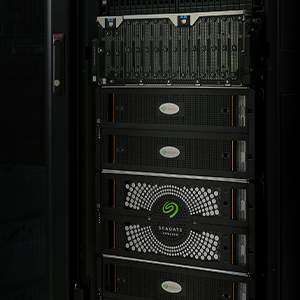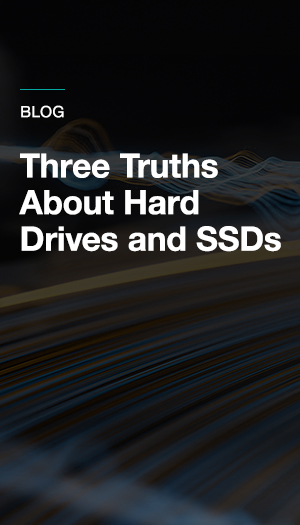In Goldilocks and the Three Bears, we spend a lot of time focused on what was right for Goldilocks while missing one significant detail. What wasn’t right for her was perfect for Papa or Mama Bear. Storing data is a lot like this story; what’s wrong for one type of data might be just right for another.
Typically, the faster you want to retrieve your data, the more expensive that data storage is. More cost-effective solutions aren’t always the most accessible. Choosing one general storage method for all types of data doesn’t strike the right balance—something will always be too slow or too costly. Enter tiered storage.
Tiered storage is one strategy for managing data that can help you keep costs reasonable while maintaining fast access to the data you need most. Let’s look at how it works.
What is tiered storage?
Tiered storage is a data management strategy that organizes data into different layers—or tiers—based on its importance and how frequently it’s accessed. The primary goal of this approach is to be sure critical and frequently used data resides on high-performance storage solutions, such as solid-state drives (SSDs). In contrast, less critical data is stored on cost-effective solutions, like hard drives.
This strategy not only improves system performance but reduces overall storage costs. For example, a company might use ultra-fast SSDs for real-time analytics and hard drives for long-term archival purposes.
Seagate provides both enterprise SSDs and enterprise hard drives, catering to the diverse demands of the global datasphere. These needs include real-time analytics requiring ultra-fast data access, long-term archival storage for compliance and historical records, scalable systems to handle growing data volumes, cross-platform compatibility for diverse IT environments, and robust data security to maintain compliance and protect sensitive information.
In other words, the needs are many, but the solution can help streamline storage.
Tiering vs. caching.
Tiering and caching are both strategies to enhance storage efficiency, but they serve different purposes:
- Tiering involves classifying and storing data on different storage mediums based on its usage patterns. Data is moved between tiers dynamically or manually over time to optimize performance and cost.
- Caching, on the other hand, temporarily stores frequently accessed data in high-speed memory to reduce latency. Unlike tiering, cached data is typically a duplicate rather than the primary copy.
Understanding these differences is key to implementing the right strategy for specific business needs.
Tiered storage data classification.
In a perfect world, you’d have both the most cost-effective data storage featuring ultra-fast retrieval speeds, but until that solution is built, tiered storage offers a logical balance. Effective tiered storage relies on accurate data classification, with data typically organized into the following tiers:
Tier 0: ultra-fast data.
This tier is reserved for mission-critical data that demands ultra-low latency. Examples include real-time financial transactions or high-frequency trading systems. SSDs or NVMe drives are the ideal storage solutions for tier 0 due to their unmatched speed and reliability.
Tier 1: hot data.
Tier 1 stores frequently accessed data that requires high performance, such as customer interactions or operational dashboards. SSDs are well-suited for this tier, ensuring rapid retrieval and response times.
Tier 2: warm data.
Warm data occupies a middle ground between performance and cost. This tier typically contains important but less frequently accessed information, such as monthly reports or project archives. A combination of external SSDs and hard drives can provide the right balance for tier 2 data.
Tier 3: cold data.
Cold data consists of infrequently accessed or archival information, such as compliance records or historical backups. Cost-effective solutions like external hard drives or tape storage are ideal for this tier, offering significant savings without compromising data availability.
Once you’ve classified your data, you’ll get closer to that Goldilocks just right storage system.
Benefits of implementing tiered storage.
There are several very good reasons to organize your data using tiers, including:
Cost efficiency.
With tiered storage, only critical data is stored on high-performance media like SSDs while less critical data is moved to more economical solutions like hard drives. This approach minimizes expenses without sacrificing performance where it matters most.
Improved performance and scalability.
Tiered storage enhances system performance by keeping your frequently accessed, essential data on faster (but more expensive) media. Additionally, it supports scalability as data needs grow, allowing businesses to add more SSDs or hard drives to meet increasing storage demands efficiently.
Enhanced data management.
Tiered storage simplifies data management processes by automating the classification and movement of data between tiers. This results in each data type being stored on the most appropriate medium, optimizing both accessibility and resource utilization.
What is automated storage tiering?
Automated storage tiering is a process of dynamically moving data between different storage tiers based on predefined policies and real-time usage patterns. This automation allows the most critical data to be always available on high-performance storage while less critical data is moved to cost-effective solutions—all without manual intervention. By leveraging intelligent algorithms, automated tiering eliminates the guesswork and effort required to manage storage, allowing businesses to focus on their core operations.
Tiered data storage challenges.
Tiered storage is not without challenges. Decision-makers often grapple with finding the right balance between cost savings and adequate performance levels for critical applications, making it difficult to justify tiered storage investments.
Integration with existing systems.
One of the most significant challenges is integrating tiered storage solutions with legacy systems, and at this point in the digital transformation game, there are a lot. Older systems may lack compatibility with modern storage technologies, leading to increased complexity and potential downtime during the transition.
Managing data across multiple tiers.
Accurately classifying data into appropriate tiers is essential for maximizing the benefits of tiered storage. Poor classification can result in performance bottlenecks, wasted resources, and suboptimal storage utilization.
Data security and compliance.
Moving sensitive data to lower cost storage tiers can introduce potential security vulnerabilities. Verifying data remains secure and compliant with industry regulations—regardless of its storage tier—is a complex undertaking and also an unbelievable necessity for companies managing big data.
Five steps to successfully implement tiered storage
How do you shift to tiered data storage, especially if you already have legacy systems and a storage strategy? By following these five steps:
1. Classify data and applications.
The entire process begins by taking a serious look at your data and applications. Consider factors like performance needs, availability requirements, and recovery objectives. Accurate classification ensures data is stored on the appropriate tier from the start.
2. Define storage tiers.
Establish storage tiers based on performance, cost, and capacity characteristics. High-performance SSDs are ideal for hot data, while lower cost hard drives or tape are suited for cold data.
3. Implement automated tiering software.
Leverage automated storage tiering software to dynamically move data across tiers based on predefined policies and real-time access patterns. Automation reduces manual intervention and optimizes the use of storage resources.
4. Create an active archive.
Set up an active archive for infrequently accessed data to keep it online and readily accessible when needed. This approach balances accessibility with cost efficiency.
5. Monitor and optimize.
Continuously monitor the performance and usage of the tiered storage system. Adjust policies and tier allocations for different data as business needs and data usage patterns evolve. Regular optimization helps the system remain aligned with organizational goals.
Strategize your tiered storage with Seagate innovative solutions.
Operations today are data intensive. Traditional storage solutions may not balance speed with cost-effectiveness, but a tiered storage option is flexible and more easily scalable.
Seagate innovative products, such as the BarraCuda® PCIe SSD, are designed to support these strategies. With legendary reliability, unmatched performance, and scalability, Seagate empowers organizations to meet the demands of modern data storage. Whether it’s managing hot data with SSDs or leveraging cost-effective hard drives for archival storage, Seagate provides the tools needed for success.













